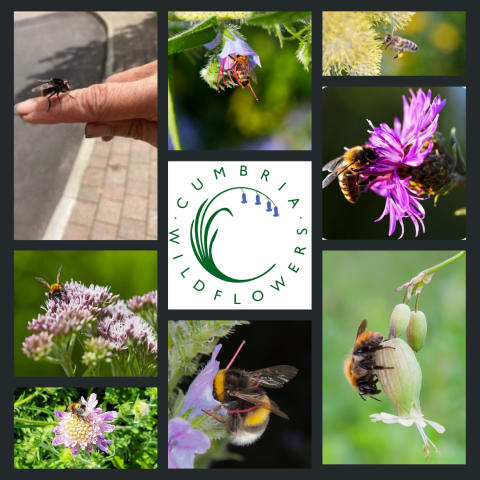How to Identify a Honey Bee: A Guide to Recognising Nature's Vital Pollinators
Honey bees are fascinating and vital insects that play a crucial role in pollinating plants and contributing to the biodiversity of our planet. Not only do they provide us with delicious honey and beeswax, but they also help sustain countless agricultural crops. Identifying honey bees is an essential skill for nature enthusiasts, beekeepers, and anyone interested in appreciating these industrious creatures up close. In this blog, we will explore the characteristics and behaviour of honey bees to help you easily recognise them in various settings.
Physical Characteristics
Honey bees have distinctive features that set them apart from other types of bees and insects. To identify a honey bee, look for the following physical characteristics:
a. Size: Honey bees are generally about half an inch to three-quarters of an inch in length, with worker bees being smaller than drones and the queen.
b. Colour: Honey bees have black and yellow bands on their abdomen, but the exact pattern may vary depending on the species.
c. Head: Their head is relatively large, featuring compound eyes and two antennae that help them sense their environment.
d. Wings: Honey bees have two pairs of wings, which are translucent and attached to their thorax.
e. Proboscis: They have a long, slender tongue-like proboscis used for sipping nectar from flowers.
Social Behaviour
Honey bees are social insects and live in colonies, each consisting of thousands of bees. Understanding their behaviour can also aid in identification:
a. Division of Labour: The colony comprises three castes: the queen, workers, and drones. The queen is typically larger and the only one to lay eggs. Workers are sterile females responsible for foraging, nest building, and caring for the brood. Drones are male bees whose primary purpose is to mate with a virgin queen.
b. Dancing: Honey bees communicate through "dances" that convey the direction and distance of a food source to other worker bees.
c. Pollination: While foraging for nectar, pollen collects on their bodies and is transferred between flowers, enabling the essential process of pollination.
Nesting Habits
Honey bees construct nests in a variety of places, depending on the species. Common nesting sites include:
a. Hives: Managed honey bee colonies are housed in artificial hives, such as Langstroth or top-bar hives, designed by beekeepers.
b. Tree Hollows: In the wild, honey bees may establish their nests within tree hollows or crevices.
c. Cavities: Sometimes, honey bees build their nests in man-made structures like buildings or walls.
Foraging Patterns
Observing the foraging behaviour of bees can be helpful in identifying honey bees:
a. Flower Visitation: Honey bees are frequent visitors to flowers, collecting nectar and pollen to take back to their colony.
b. Flight Pattern: They often fly in a direct line between their nest and the food source.
c. Floral Preferences: Honey bees show a preference for certain types of flowers, such as daisies, sunflowers, and fruit tree blossoms.
Identifying honey bees can be a rewarding and educational experience. These industrious pollinators are essential for maintaining ecosystems and supporting agriculture worldwide. By understanding their physical characteristics, social behaviour, nesting habits, and foraging patterns, you can confidently recognise honey bees in their natural habitats. Always remember to approach bees with caution and respect, as they are vital contributors to the delicate balance of our environment. So, the next time you spot a honey bee buzzing about, take a moment to appreciate the incredible work they do for our planet.
When you subscribe to the blog, we will send you an e-mail when there are new updates on the site so you wouldn't miss them.



Comments